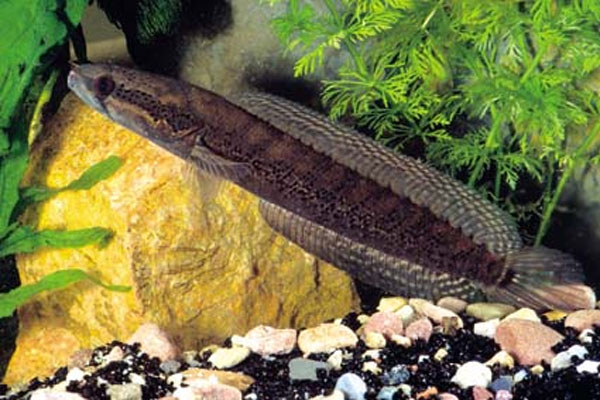| Channidae (Snakeheads) |
| 32 cm TL (male/unsexed) |
|
benthopelagic; freshwater |
| Africa: south Benin (lower Ouémé River) to Nigeria (lower Cross River)(Ref. 57290, 81648). Reports from Cameroon (Ref. 3575, 51193) unconfirmed and questionable (Ref. 57290, 81648). Report from Gabon dubious (Ref. 81648). |
|
Dorsal spines (total): -0; Dorsal soft rays (total): 45-48; Anal spines: -0; Anal soft rays: 32-35. Diagnosis: body elongate, tapering backwards; lateral-line scales medium-sized, numbering 73-83; head depressed anteriorly and covered with larger scales; lower jaw slightly longer than upper, with 3-4 well developed canines; dorsal and anal fins not touching caudal fin; dorsal fin with 45-48, anal with 32-35 rays; 8-11 chevron-shaped dark bars on sides (Ref. 57290, 81648).
Coloration: body light to dark grey, back and top of head darker, underside lighter; dark lateral band on head, broadening between hind margin of eye and hind margin of gill cover, followed by a large, rounded, black spot; small, rounded black spot at base of caudal fin; all fins covered with small dark spots forming more or less distinct oblique bands; ground colour of juveniles ochre, and a long, black lateral band extending from tip of snout to hind margin of caudal fin (Ref. 57290, 81648). |
| Maximum SL reported is 17.2 cm (Ref. 57290). |
|
Least Concern (LC); Date assessed: 21 April 2019 Ref. (130435)
|
| harmless |
Source and more info: www.fishbase.org. For personal, classroom, and other internal use only. Not for publication.
